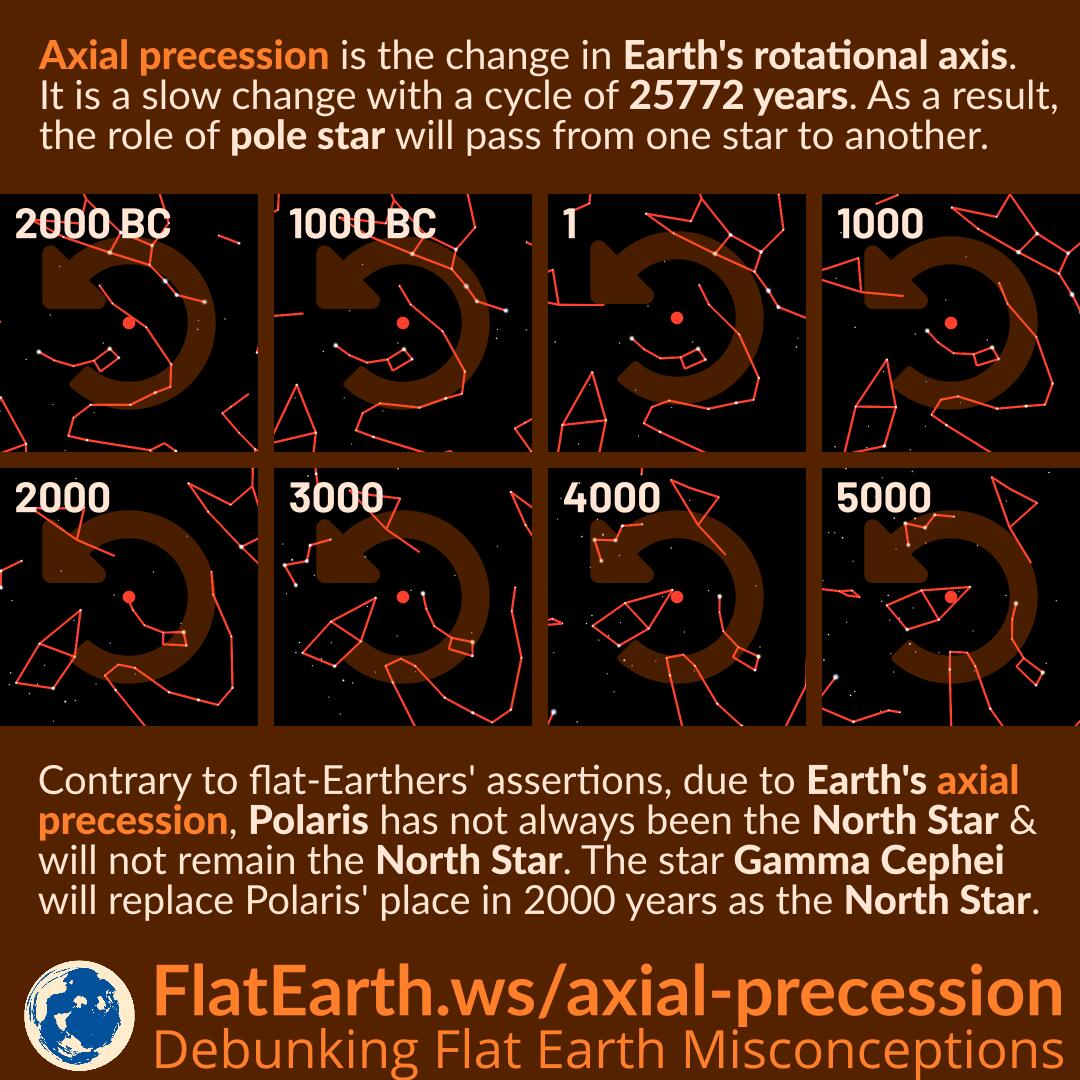Axial precession is the change in Earth’s rotational axis. It is a slow change with a cycle of 25772 years. As a result, the role of pole star will pass from one star to another.
Contrary to flat-Earthers’ assertions, due to Earth’s axial precession, Polaris has not always been the North Star and will not remain as the North Star. The star Gamma Cephei will replace Polaris’ place in 2000 years as the North Star.
Precession is the same motion we observe on a rotating top. Besides the rotating motion, we can also watch the axis of rotation is moving, and it will become more evident as the top rotates slower.
In the year zero, the northern celestial pole is closer to Kochab than Polaris. But it is still too far away from the north celestial pole, so it was not usually regarded as the pole star. Pytheas —a Greek adventurer— described that the north celestial pole as devoid of stars.
In the next few centuries, the north celestial pole will drift too far from Polaris, and we will start calling the star Gamma Cephei as our new pole star.
The same thing is also occurring in the south celestial pole. The closest star to the south celestial pole is currently Sigma Octantis, though it is too dim to be usable in celestial navigation, unlike Polaris in the north. In time, the south celestial pole will move away from it, and other stars will become the southern pole star.
References
- Polaris – Wikipedia
- Precession – Wikipedia
- Axial precession – Wikipedia
- Pole star – Wikipedia


